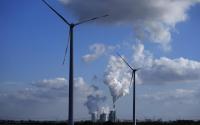28 November 2007AlertnetSugita Katyal and Adhityani Arga
It is a country with some of the world's richest coral reefs.
But scientists fear many of Indonesia's pyschedelic reefs, already significantly damaged by blast fishing and pollution, now face an even graver threat: global warming.
Over the years, rising sea temperatures have led to severe coral bleaching in some of the most spectacular reefs off the palm-fringed islands of Sulawesi and Bali that are home to exotic fish like the brightly coloured clown fish and scorpion fish.
And environmentalists say if quick steps are not taken to stop the destruction, many reefs across the sprawling archipelago of about 17,000 islands could disappear in the next few decades.
The state of coral around the world will be part of the discussions at next month's U.N. climate talks on the Indonesian resort island Bali where about 190 countries will gather to try to hammer out a replacement for the Kyoto Protocol, a global pact aimed at fighting global warming.
"Even the lower end of temperature change, even 1-2 degrees, will lead to significant coral die-off for a variety of reasons such as bleaching and submersion," Glenn Prickett, an official from Conservation International, told Reuters.
"You already have the impact of the assault on coral from destructive fishing practices and pollution. It will become worse with global warming."
Indonesia, with a coastline of some 57,000 km (35,420 miles), has at least 2.6 million hectares (6.425 million acres) of coral reefs, or about 25 percent of coral reefs in the region and 8 percent of the world's coral reefs, according to the World Bank.
DELICATE ECOSYSTEM
Millions of people make a living from Indonesia's coastal and marine sector, and in particular the small-scale fisheries supported by coral reef ecosystems.
"Indonesia is at the centre of the coral triangle. The possibility of coral bleaching is so big. If you have (an increase of) 5 degrees up, corals will be gone," said Jatna Supriatna, director of Conservation International Indonesia.
"And that will impact the economy."
The Coral Triangle -- known as the Amazon of the sea -- stretches from the central part of Indonesia to the Solomon Islands, and up from the Indian Ocean across the Philippines to the Pacific Ocean.
Coral reefs around the world are in peril with people damaging the delicate marine ecosystems and endangering some 1 million species of animals and plants that call the coral home.
Scientists estimate over 27 percent of the world's coral has been permanently lost. They estimate that another 30 percent will disappear over the next three decades.
Experts say 16 percent of the world's coral was wiped out in 1998 when global warming and the "El Nino" weather phenomenon combined to cause the highest sea temperatures ever recorded.
Reefs depend on algae called zooxanthellae to give them nutrients and brilliant colour. The coral can recover by taking up new algae from surrounding water but if temperatures stay high and the coral stays "stressed", it can become vulnerable to disease and die.
Indonesia's corals -- some of them described as "species factories" -- were hit by the El Nino phenomenon and the higher sea temperatures which caused severe bleaching and coral death.
About 75 percent of the West Bali National Park, home to some 110 coral species, has been affected with many soft corals disintegrating altogether.
Several areas around a small island off the northern coast of Java, where colourful coral reefs filled with butterfly and angel fish used to leave divers in awe, never recovered from the massive bleaching caused by El Nino.
CORAL TRIANGLE
The Coral Triangle Center -- set up by the U.S.-based Nature Conservancy in Bali to protect Indonesia's coral reefs -- works in many marine areas, including the Raja Ampat Islands in Papua and the Komodo Island in the east of the country.
The islands of Raja Ampat, or Four Kings, have been described as a biodiversity gold mine, and at least for now remain an unspoilt example of the richness of the coral ecosystem.
Located off the northwest tip of Bird's Head Peninsula near the remote island of Papua, the area's pristine reefs consist of mile after mile of vivid red, pink, yellow and purple coral.
Named after the four sultans who presided there, it is home to more than 1,000 fish species such as wobbegong sharks and giant clams.
Faced with the rapid degeneration of coral, in the late 1990s some North Sulawesi villagers set aside six hectares of degraded coral reefs and mangroves as the first community-run marine sanctuary in the country.
As part of efforts to protect the region's fragile corals, Indonesia proposed a Coral Triangle Initiative (CTI) under which six Asia-Pacific countries -- Indonesia, the Philippines, Malaysia, Papua New Guinea, the Solomon Islands and East Timor -- will work jointly to preserve marine resources in the area.
The sprawling area is the global centre of marine biodiversity with more than 3,000 fish species and 600 coral species, which makes up 75 percent of the world's coral species.
"The current condition of Indonesia's coral reefs is in a worrying state," Abdul Halim, policy manager of Nature Conservancy's Coral Triangle Center in Bali, told Reuters.
"Only 10-20 percent of the total reefs are in excellent condition, the majority has been damaged, degraded or completely destroyed."
(Editing by Ed Davies and Megan Goldin)






